How Santa Ana winds help fires spread
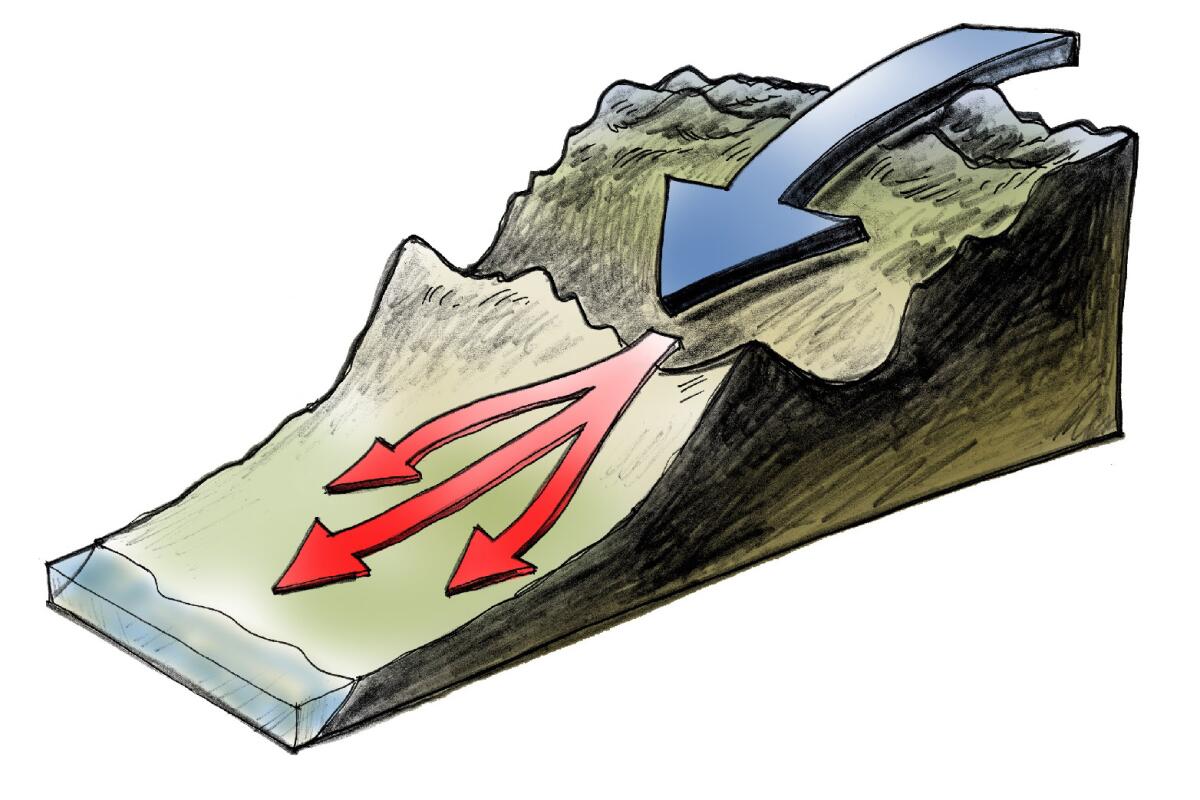
Santa Ana winds are strong, extremely dry down-slope winds in Southern California and northern Baja California. They originate inland in desert regions and occur mainly in the fall, but can arise during other seasons.
A typical Santa Ana scenario
Most Santa Ana wind events are caused by high pressure in the Great Basin and lower pressure off the coast. Air from areas of high pressure flows toward those of lower pressure, and the gradient, or difference, causes the intense winds.
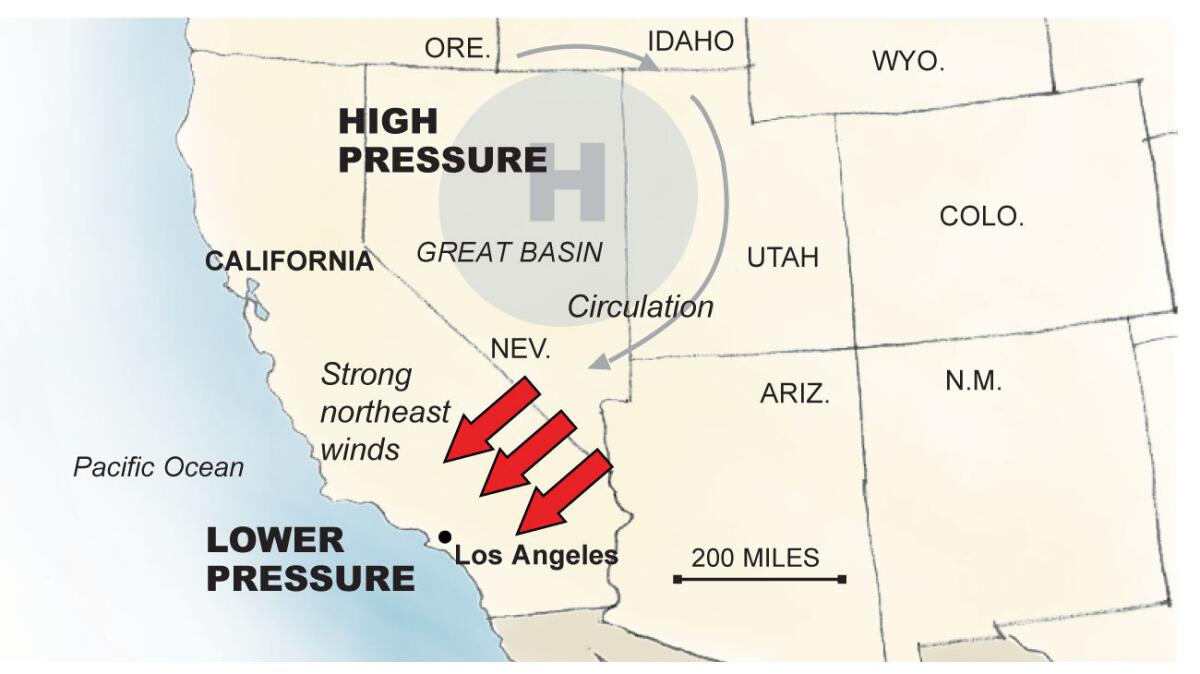
Why mountain and canyon winds are stronger
Air from areas of high pressure over high ground inland flows down toward sea level in Southern California. The sinking air heats up, loses moisture and speeds up, especially as it squeezes through canyons.
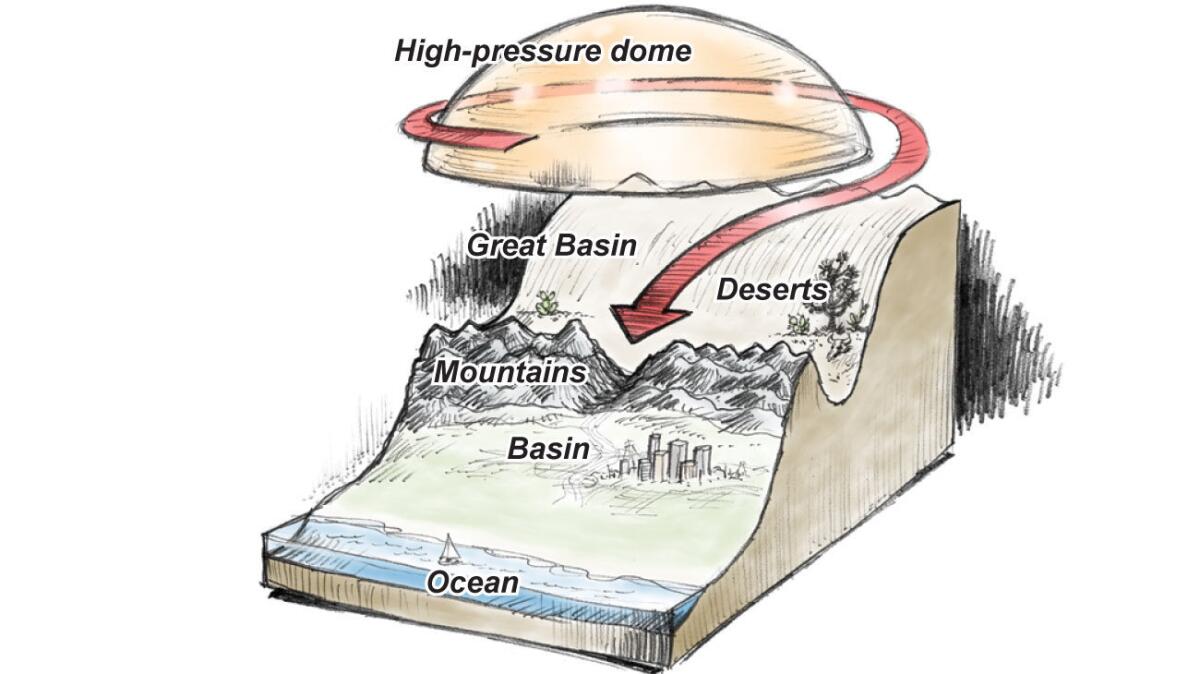
Venturi effect
Mountain ranges block winds in some areas while winds howl elsewhere. Winds seek openings through the mountains, much like water would. Canyons and passes provide narrow openings that accelerate the winds like a nozzle on a garden hose does to water.
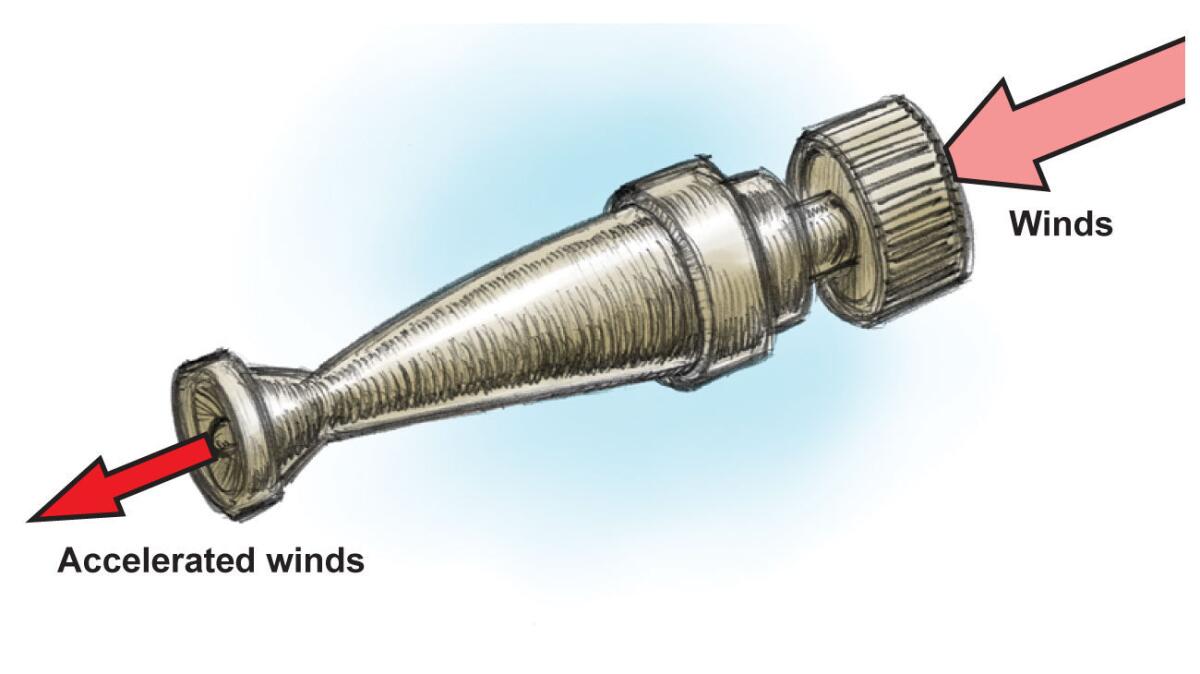
Terrain’s role with the winds during wildfires
Terrain can play a part in a fire’s progress. On hillsides with gullies or ravines, a chimney effect can cause hot gases to rise up these channels. The fire creates a draft, pulling oxygen in, and blazes roar up rapidly as if in a chimney.
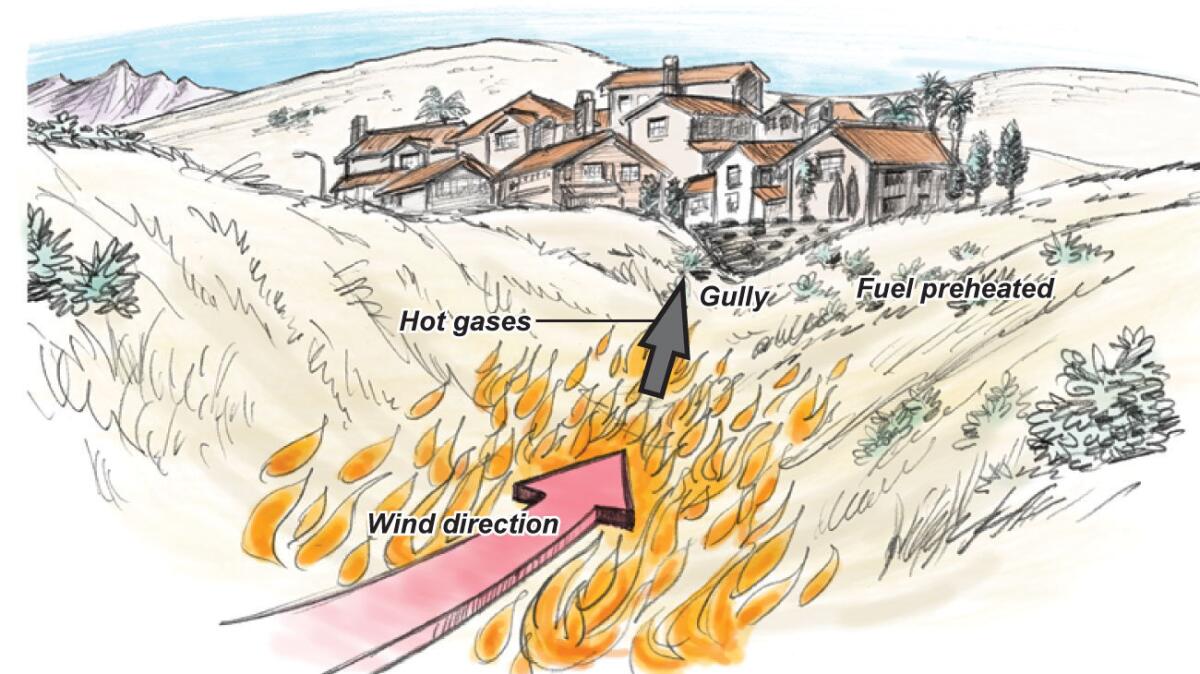
Fires spread fire
As fires rage and winds blow, hot embers may be carried far away from burning areas. They can touch off smaller fires well ahead of or behind a main fire, and these may turn into new wildfires.
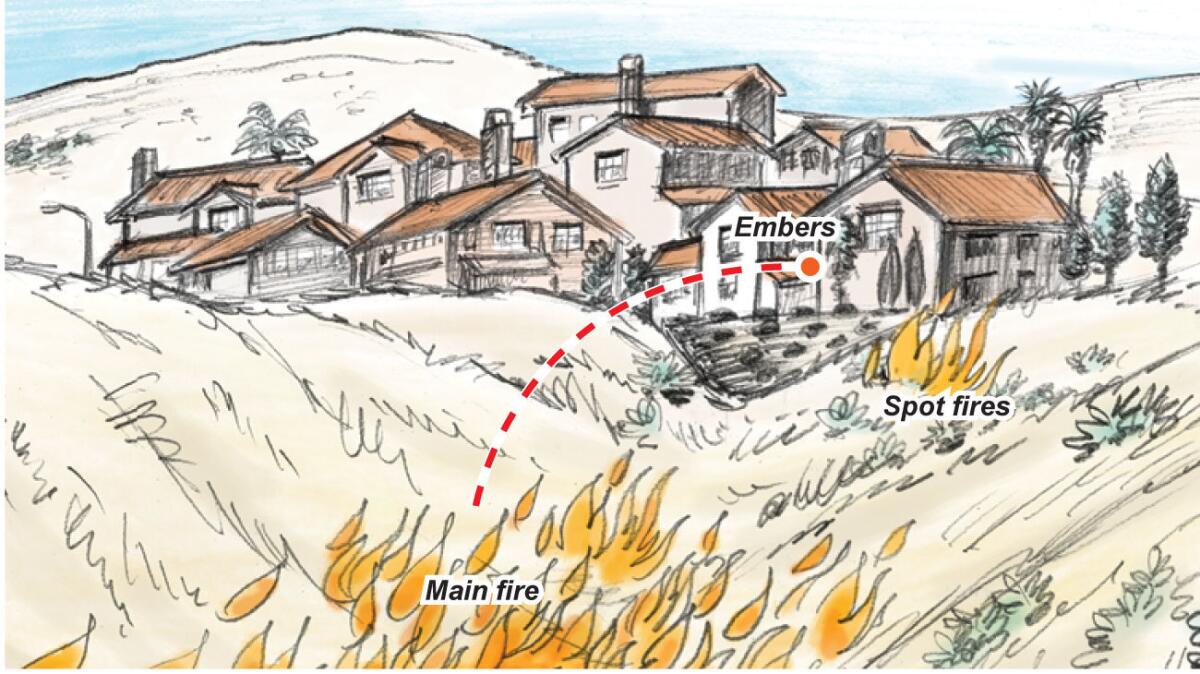
Sources: National Weather Service, U.S. Geological Survey, Times reporting
Follow me for the latest infographics from the latimes. @latimesgraphics @CartoonKahuna
Sign up for Essential California
The most important California stories and recommendations in your inbox every morning.
You may occasionally receive promotional content from the Los Angeles Times.








